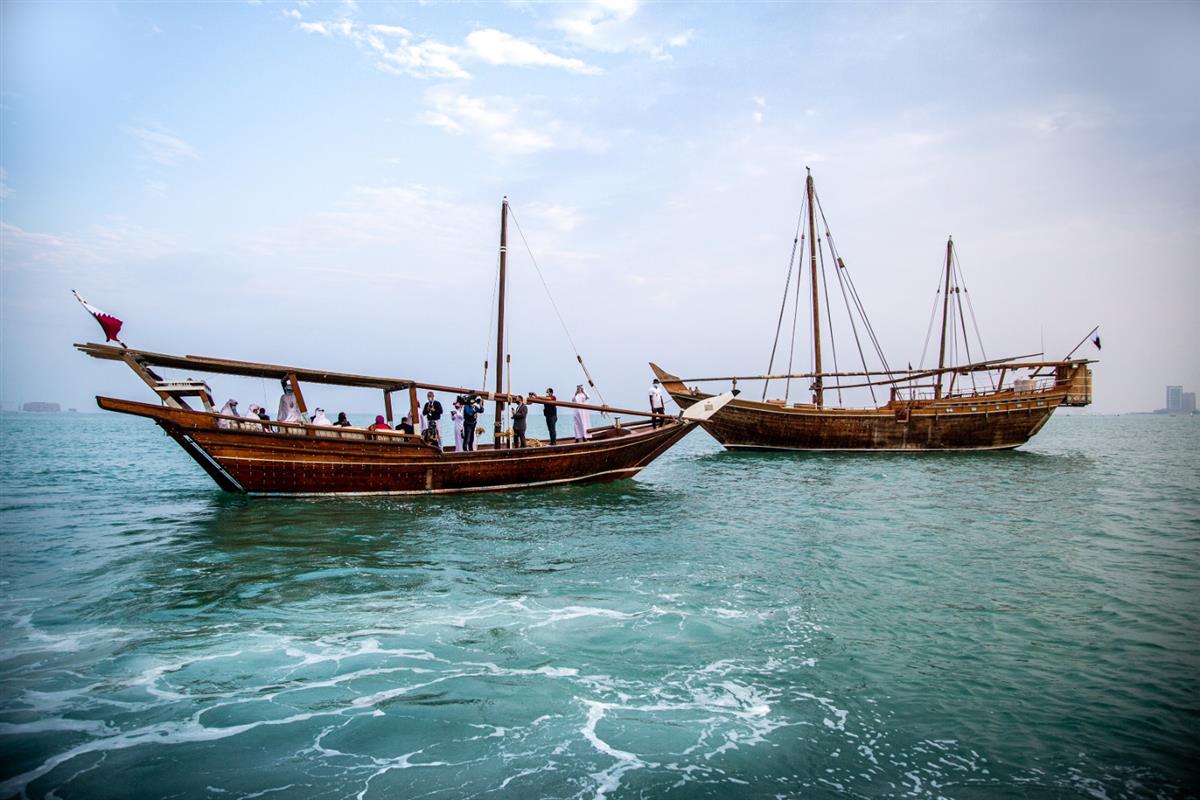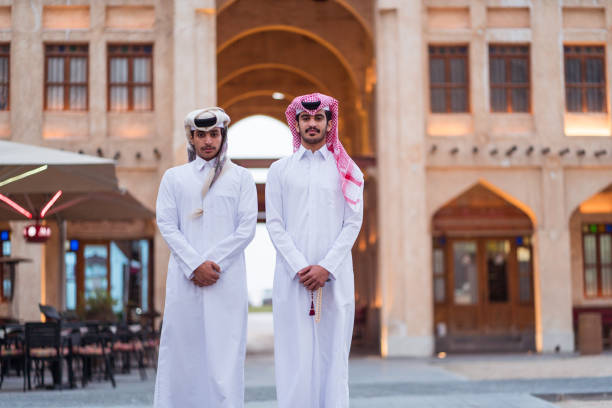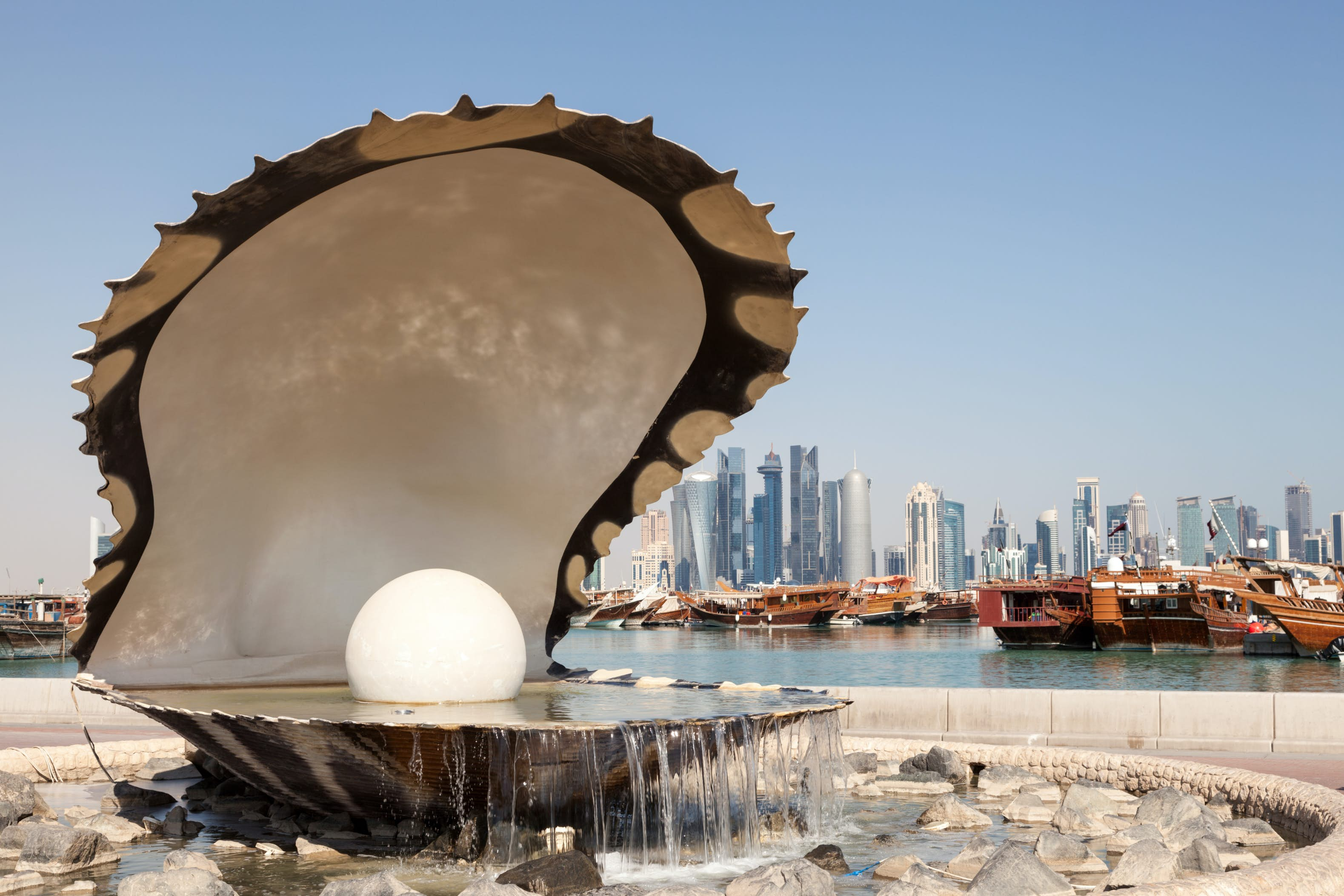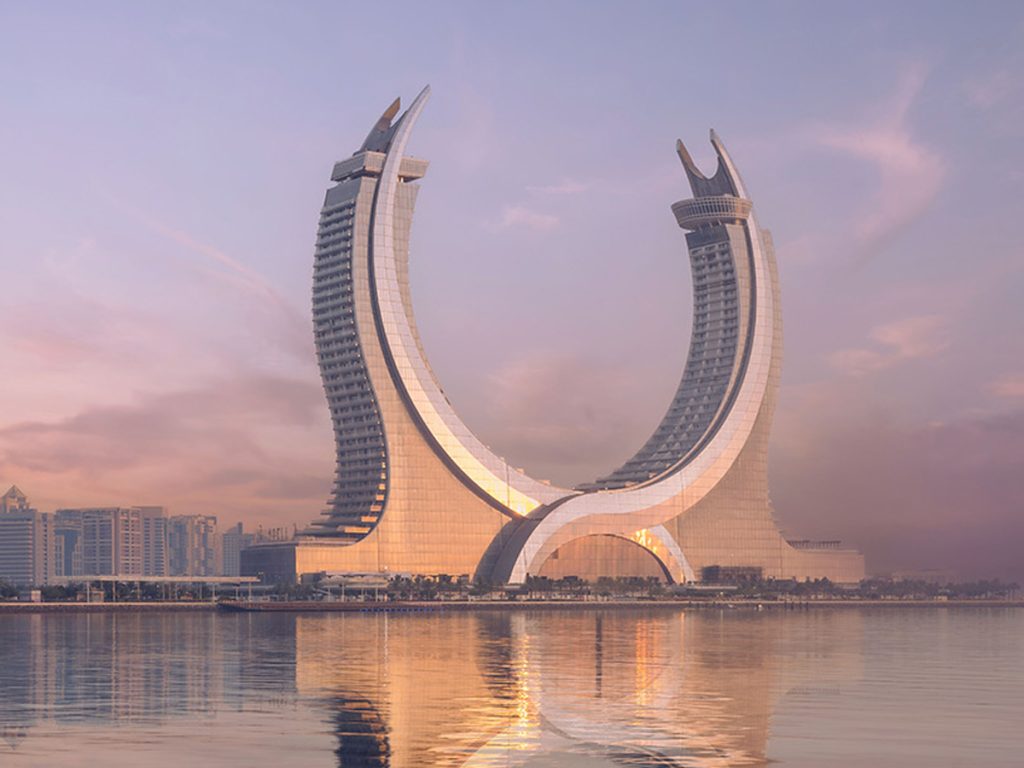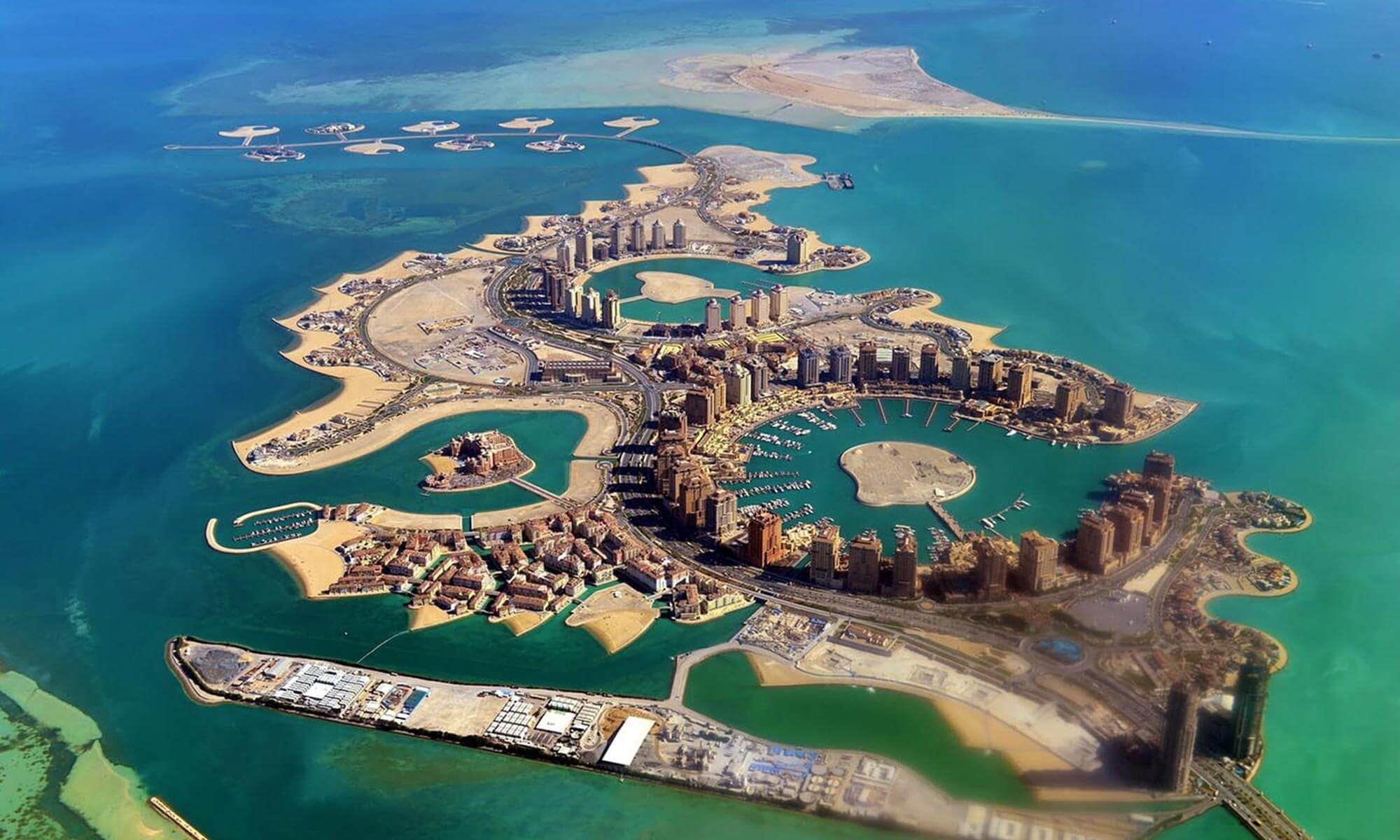전시관 내에서는 이어폰을 이용해주세요.
다문화박물관 카타르 1
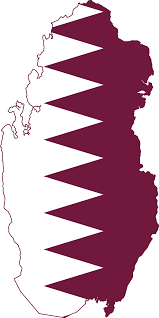
Early history
The first evidence of sustained human settlement in Qatar dates to the 6th millennium BCE, in the form of small, isolated farmsteads, stone tools and decorated pottery. These settlements belong to what is known as the ‘Ubaid period’, named after the site in southern Mesopotamia where this type of painted pottery was first discovered. This indicates that these early settlers had ties to the area that is now modern Iraq. During this period, the climate in eastern Arabia is believed to have been much wetter than it is now, with evidence of inland wells and the cultivation of wild cereal crops.
As early as 628 CE, Mundhir bin Sawa Al Tamimi, the Christian ruler of the Al Hasa region that included the Qatar peninsula, adopted Islam. Only a few sites have been identified from this early Islamic period, suggesting that the peninsula was sparsely populated at this time. During the Umayyad period, between the 7th and mid-8th centuries CE, Qatar became a centre for camel and horse breeding. The reign of the Abbasids (8th to 13th century CE) saw the growth of the pearl industry along the rich pearl banks in Qatar’s marine waters. Archaeological remains from the late Umayyad period were discovered at Yoghbi in northwestern Qatar, while remains from the early Abbasid period of the 9th and 10th centuries CE were discovered at nearby Murwab, comprising 250 houses, two mosques and a fortified mansion. In addition to Murwab, a number of other Abbasid-period sites have been identified in northern Qatar and are located inland.
In 1497, Portuguese explorer Vasco da Gama’s voyage to India via the Cape of Good Hope established a European maritime route to the East. This allowed Europeans to establish permanent trading bases in the Gulf region for the first time. During the 16th and the early 17th centuries, the territory comprising modern day Qatar was fought over by the Ottomans, Safavids and Portuguese. One of the earliest maps to include Qatar was a version of Ptolemy’s map (on display in Qatar National Library) depicting ‘Catara’ as a fort. Portuguese travellers referred to Qatar during the 1580s and 1590s, and there is a representation of Qatar as a single fort in Luis Lazaro’s World Atlas of 1596. The main references to Qatar can be found after 1602, when the Portuguese lost Bahrain to the Safavids. After this date, the Portuguese used Qatar as a base for raiding Bahrain as well as for taxing merchants travelling through the Gulf. Excavations in Ruwayda revealed a Portuguese fortification that may have been the same fort mentioned by Portuguese sources.
The earliest Ottoman reference to Qatar dates back to 1555, with Qatar considered part of the Ottoman province of Al Hasa, occupied in the 1550s. There was a great rivalry between the Portuguese and the Ottomans during the 16th century, particularly in relation to Bahrain, which the Portuguese occupied between 1521 and 1602. However, in the 1670s, the Sheikh of the Banu Khalid tribe expelled the Ottomans from Al Hasa, likely removing all Ottoman presence from Qatar.
Majlis and other traditions in Qatar
The majlis is a central feature of Qatari life. Located by the home, this is where individuals meet to discuss pressing topics, functioning much like a salon in Western Europe.
The majlis is one of the most important spaces in Qatari life. It tends to be a male only space, with women meeting inside the home. Located near the entrance, the majlis is a separate room which allows visitors to circumvent the more private spaces in the house. Guests in the majlis are offered dates and served Arabic coffee in a characteristically shaped pot (called dallah) in tiny cups with no handles.
The most decorated space in the house, the majlis was traditionally the only room with windows opening onto the street. Less ornate houses utilised simpler decoration with recessed niches (roshaneh), while wealthier residences filled the windows of the majlis with coloured glass, with some incorporating window screens or carved gypsum panels with symmetrical geometric designs.
Ramadan traditions in Qatar
Ramadan is the ninth and considerably most important month of the Islamic lunar calendar. During this time, Muslims everywhere abstain from food and drink from sunrise to sunset. A time of reflection and spirituality, Ramadan brings together otherwise disparate individuals in the common act of fasting. It is a time of charitable giving, and abstemiousness
Eid traditions in Qatar
The Islamic lunar calendar has several important dates, but the most festive are the two Eid holidays. After Ramadan, the month-long period of fasting comes the feasting that heralds Eid Al Fitr. About two months later, marking the end of Hajj, is Eid Al Adha. Stretching over four days, each Eid has its own historical significance and associated traditions. In general, it is a time for community – to meet family and friends, share food and give little children Eid money.
The meeting and greeting begins with Eid prayers, usually held very early in the morning. These are traditionally held in mosques, where the men gather without the usual call to prayer. This is followed by a brief sermon by an Imam. Mosques tend to be male-only spaces, or segregated, with women usually offering their prayers from home. Everyone wears their best attire, with men often tailoring new thobes, and women, beautiful dresses and kaftans. After a small breakfast at home, families venture out, greeting everyone with "Eid Mubarak" meaning "Blessed Eid", or "Kul 'am wa enta bi-khair." meaning "May every year find you in good health."
Translating into the "festival of breaking the fast," Eid Al Fitr is celebrated on the first day of the 10th month in the Islamic Lunar calendar, immediately after Ramadan. Charity is of utmost importance during this holiday, with families across Qatar making donations to favoured causes.
Eid Al Fitr is a national holiday, with schools, offices and businesses closed in the mornings so families and neighbours can celebrate together. The festive air is carried throughout Qatar, with special events in malls and public spaces. Plenty of family-friendly activities and interactive exhibits pop up at this time.
The first evidence of sustained human settlement in Qatar dates to the 6th millennium BCE, in the form of small, isolated farmsteads, stone tools and decorated pottery. These settlements belong to what is known as the ‘Ubaid period’, named after the site in southern Mesopotamia where this type of painted pottery was first discovered. This indicates that these early settlers had ties to the area that is now modern Iraq. During this period, the climate in eastern Arabia is believed to have been much wetter than it is now, with evidence of inland wells and the cultivation of wild cereal crops.
As early as 628 CE, Mundhir bin Sawa Al Tamimi, the Christian ruler of the Al Hasa region that included the Qatar peninsula, adopted Islam. Only a few sites have been identified from this early Islamic period, suggesting that the peninsula was sparsely populated at this time. During the Umayyad period, between the 7th and mid-8th centuries CE, Qatar became a centre for camel and horse breeding. The reign of the Abbasids (8th to 13th century CE) saw the growth of the pearl industry along the rich pearl banks in Qatar’s marine waters. Archaeological remains from the late Umayyad period were discovered at Yoghbi in northwestern Qatar, while remains from the early Abbasid period of the 9th and 10th centuries CE were discovered at nearby Murwab, comprising 250 houses, two mosques and a fortified mansion. In addition to Murwab, a number of other Abbasid-period sites have been identified in northern Qatar and are located inland.
In 1497, Portuguese explorer Vasco da Gama’s voyage to India via the Cape of Good Hope established a European maritime route to the East. This allowed Europeans to establish permanent trading bases in the Gulf region for the first time. During the 16th and the early 17th centuries, the territory comprising modern day Qatar was fought over by the Ottomans, Safavids and Portuguese. One of the earliest maps to include Qatar was a version of Ptolemy’s map (on display in Qatar National Library) depicting ‘Catara’ as a fort. Portuguese travellers referred to Qatar during the 1580s and 1590s, and there is a representation of Qatar as a single fort in Luis Lazaro’s World Atlas of 1596. The main references to Qatar can be found after 1602, when the Portuguese lost Bahrain to the Safavids. After this date, the Portuguese used Qatar as a base for raiding Bahrain as well as for taxing merchants travelling through the Gulf. Excavations in Ruwayda revealed a Portuguese fortification that may have been the same fort mentioned by Portuguese sources.
The earliest Ottoman reference to Qatar dates back to 1555, with Qatar considered part of the Ottoman province of Al Hasa, occupied in the 1550s. There was a great rivalry between the Portuguese and the Ottomans during the 16th century, particularly in relation to Bahrain, which the Portuguese occupied between 1521 and 1602. However, in the 1670s, the Sheikh of the Banu Khalid tribe expelled the Ottomans from Al Hasa, likely removing all Ottoman presence from Qatar.
Majlis and other traditions in Qatar
The majlis is a central feature of Qatari life. Located by the home, this is where individuals meet to discuss pressing topics, functioning much like a salon in Western Europe.
The majlis is one of the most important spaces in Qatari life. It tends to be a male only space, with women meeting inside the home. Located near the entrance, the majlis is a separate room which allows visitors to circumvent the more private spaces in the house. Guests in the majlis are offered dates and served Arabic coffee in a characteristically shaped pot (called dallah) in tiny cups with no handles.
The most decorated space in the house, the majlis was traditionally the only room with windows opening onto the street. Less ornate houses utilised simpler decoration with recessed niches (roshaneh), while wealthier residences filled the windows of the majlis with coloured glass, with some incorporating window screens or carved gypsum panels with symmetrical geometric designs.
Ramadan traditions in Qatar
Ramadan is the ninth and considerably most important month of the Islamic lunar calendar. During this time, Muslims everywhere abstain from food and drink from sunrise to sunset. A time of reflection and spirituality, Ramadan brings together otherwise disparate individuals in the common act of fasting. It is a time of charitable giving, and abstemiousness
Eid traditions in Qatar
The Islamic lunar calendar has several important dates, but the most festive are the two Eid holidays. After Ramadan, the month-long period of fasting comes the feasting that heralds Eid Al Fitr. About two months later, marking the end of Hajj, is Eid Al Adha. Stretching over four days, each Eid has its own historical significance and associated traditions. In general, it is a time for community – to meet family and friends, share food and give little children Eid money.
The meeting and greeting begins with Eid prayers, usually held very early in the morning. These are traditionally held in mosques, where the men gather without the usual call to prayer. This is followed by a brief sermon by an Imam. Mosques tend to be male-only spaces, or segregated, with women usually offering their prayers from home. Everyone wears their best attire, with men often tailoring new thobes, and women, beautiful dresses and kaftans. After a small breakfast at home, families venture out, greeting everyone with "Eid Mubarak" meaning "Blessed Eid", or "Kul 'am wa enta bi-khair." meaning "May every year find you in good health."
Translating into the "festival of breaking the fast," Eid Al Fitr is celebrated on the first day of the 10th month in the Islamic Lunar calendar, immediately after Ramadan. Charity is of utmost importance during this holiday, with families across Qatar making donations to favoured causes.
Eid Al Fitr is a national holiday, with schools, offices and businesses closed in the mornings so families and neighbours can celebrate together. The festive air is carried throughout Qatar, with special events in malls and public spaces. Plenty of family-friendly activities and interactive exhibits pop up at this time.
00:00
01:50
11
다문화박물관 카타르 1

